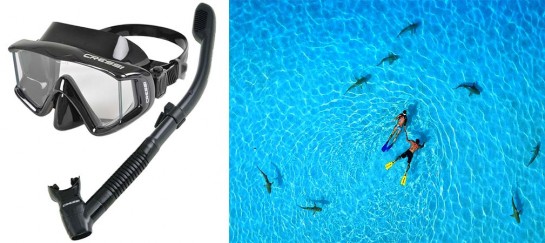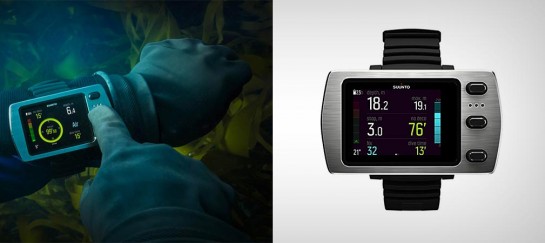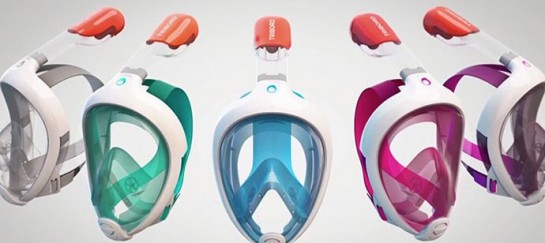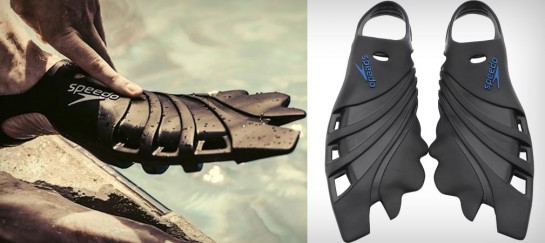
How to Choose a Suitable Dive Light
When you plan to take your next dive, you’ll need a light that can illuminate the underwater environment to explore its depths safely. But with so many lights on the market today, it might be difficult to find the right one for your needs. In this blog post, we will guide you through choosing a suitable dive light and provide tips and tricks on ensuring you have what is needed for a safe and successful dive experience. We’ll cover considerations such as durability and brightness levels, rechargeable or non-rechargeable options, compatibility with other gear, cost factors, and more! So read on to find out how best to equip yourself for your next plunge into the unknown!
The purpose of a dive light – what type of diving do you plan to do
Before heading out for a diving adventure, it’s important to consider your needs when selecting a dive light. A dive light aims to illuminate your path and explore the underwater world at greater depths. Depending on the type of diving you plan, you may have specific needs regarding brightness and battery life. For example, a less powerful light may suffice if you plan to dive during the day. However, to explore caves or wrecks, you’ll need a much brighter light with long battery life to explore caves or wrecks to ensure a safe and successful dive. For a night-time dive session, consider exploring various night diving lights.
Do your research – read reviews and compare different models, and their features and prices
When making a purchase, especially a big-ticket item like electronics, it’s always wise to do your research before taking the plunge. This means reading reviews from other consumers who have experience with the product and comparing different models to see which one fits your needs best. One important factor to consider is the features each model offers and how they compare to other options on the market. Of course, the price also plays a significant role in your decision-making process. By comparing different products and their features and prices, you can feel confident in your purchase and be happy with your decision for years to come.
Consider size, weight, and material – ensure it is not too heavy or bulky to carry underwater
When choosing a light for underwater adventures, there are a few key factors to consider, including size, weight, and material. You want to ensure that the light you choose is not too heavy or bulky to carry while you swim or dive. Remember that you may be carrying other equipment, such as a camera or oxygen tank, so you don’t want your light to add unnecessary weight. Additionally, the material of the light should be durable enough to withstand the underwater environment. By considering these factors, you can ensure that the light you choose will be practical, functional, and easy to use throughout your underwater adventures.
Think about beam angle and range – determine how wide or narrow you need the beam to be
When choosing the right light for your space, it’s important to consider the beam angle and range. The beam angle refers to how wide or narrow the light spreads, while the range pertains to how far the light can reach. By determining the right beam angle and range for your needs, you can ensure optimal lighting that fits the specific requirements of your space. A narrow beam angle is ideal for directional lighting, while a wide beam angle is best for illuminating larger areas. Additionally, the range of light is determined by its brightness and the distance it can reach. By evaluating your space and the purpose of the lighting, you can determine the appropriate beam angle and range for your needs.
Select appropriate power supply – decide if you want a disposable or rechargeable battery
When selecting a power supply, it’s important to consider whether you want a disposable or rechargeable battery. Disposable batteries are great for one-time use but may not be the most cost-effective option in the long run. Rechargeable batteries, however, can sustain power for much longer and be recharged multiple times, making them a more environmentally friendly choice. Consider the frequency and duration of your power needs and your budget when deciding which type of battery is right for you. With the right power supply, you can keep your devices and equipment running smoothly for as long as needed.
Check certifications and safety standards – make sure the dive light has proper certifications
Before taking the plunge into the depths of the underwater world, ensuring that your dive light has the proper certifications and adheres to safety standards is essential. Look for certifications like CE, RoHS, and UL which indicate that the dive light meets safety regulations for use underwater. These certifications ensure the product has been thoroughly tested to demonstrate its safety and reliability. Additionally, ensure that the dive light has the proper IP rating for your intended usage – whether for recreational or technical diving. By ensuring your dive light meets these standards, you can have peace of mind knowing that you are using a safe and reliable product during your underwater adventures.
Concluding thoughts
In conclusion, choosing the right dive light is not a decision to be made lightly (pun intended). It’s important to understand how different aspects of diving can affect your lighting needs, such as the type of diving you plan to do and the conditions at your desired dive site. Researching dive lights is important to identify ones that suit your specific needs regarding battery life, weight, beam angle and range, and so forth. Pay attention to certifications for safety purposes, and also consider cost when deciding which light to buy. By considering all of these factors, you will surely be able to find the perfect dive light for your individual diving needs.
Daily Newsletter
Subscribe to Jebiga for a dose of the best in gear, design, rides, tech and adventure.






